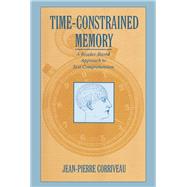
Note: Supplemental materials are not guaranteed with Rental or Used book purchases.
Purchase Benefits
Looking to rent a book? Rent Time-constrained Memory: A Reader-based Approach To Text Comprehension [ISBN: 9780805817126] for the semester, quarter, and short term or search our site for other textbooks by Corriveau; Jean-Pierre. Renting a textbook can save you up to 90% from the cost of buying.
| Foreword | p. xiii |
| Preface | p. xv |
| Foundations | p. 1 |
| Overview | p. 3 |
| Models of Understanding | p. 17 |
| Design | p. 83 |
| Designing a Grounded Architecture | p. 85 |
| Modeling Time-Constrained Memory | p. 111 |
| Chapter: A Prototype of Idiot | p. 157 |
| Linguistic Comprehension with Idiot | p. 207 |
| On Linguistic Comprehension | p. 209 |
| On Grammar and Syntax | p. 227 |
| Reference Resolution | p. 247 |
| Word Sense Disambiguation | p. 273 |
| Structural Disambiguation | p. 299 |
| Bridging Inferences | p. 321 |
| Conclusions | p. 343 |
| Some Last Thoughts | p. 345 |
| References | p. 359 |
| Author Index | p. 395 |
| Subject Index | p. 405 |
| Table of Contents provided by Publisher. All Rights Reserved. |
The New copy of this book will include any supplemental materials advertised. Please check the title of the book to determine if it should include any access cards, study guides, lab manuals, CDs, etc.
The Used, Rental and eBook copies of this book are not guaranteed to include any supplemental materials. Typically, only the book itself is included. This is true even if the title states it includes any access cards, study guides, lab manuals, CDs, etc.